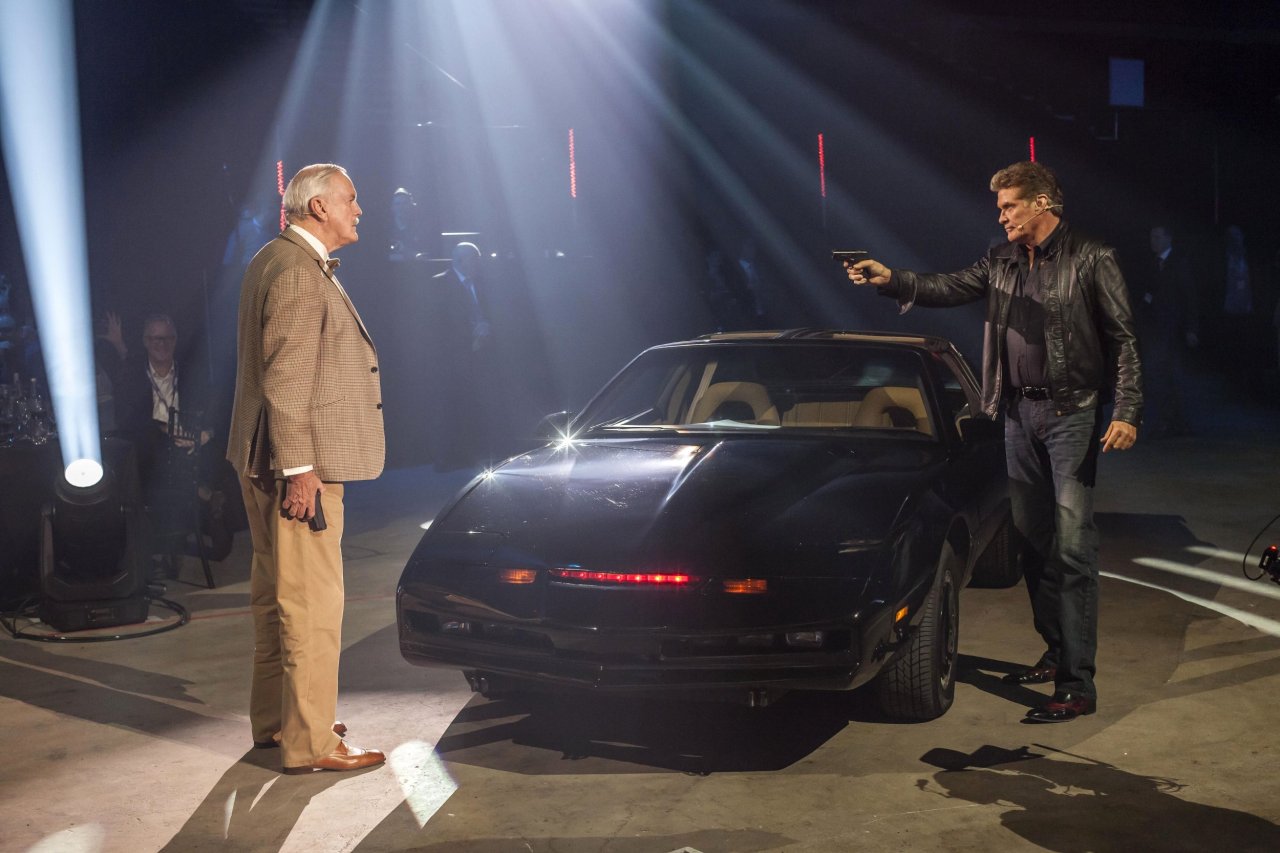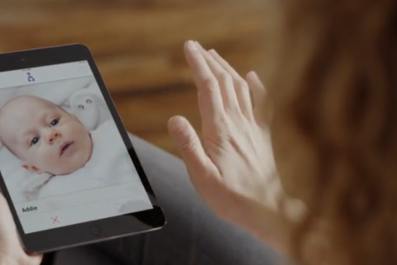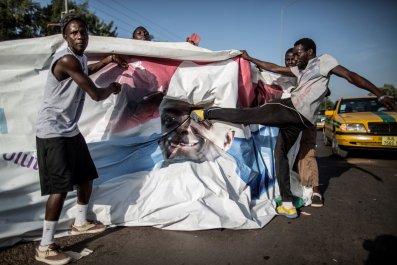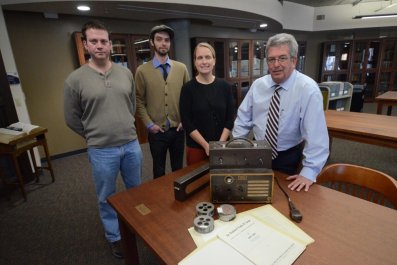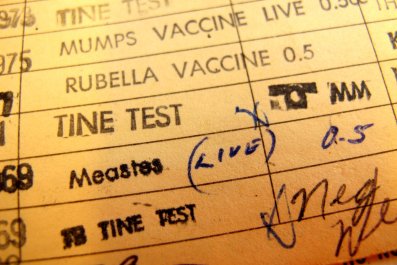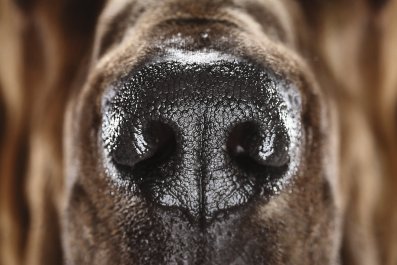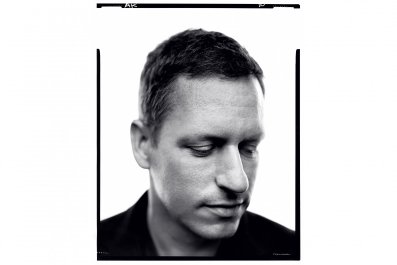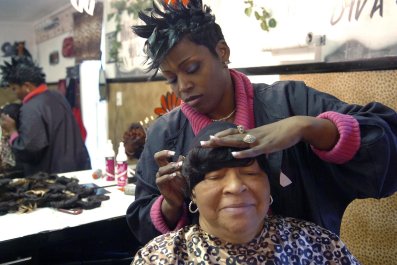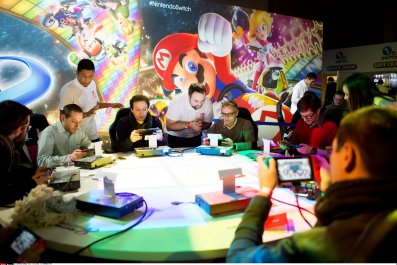Cars couldn't stay on the ground in the '80s. At least, that's what TV and film would have us believe. The era that popularized cocaine, shady banking and dementia-addled presidents also gave us Chekhov's car: If there's a Camaro in the first act, it absolutely must go off a cliff in the third act.
And not just cliffs—cars were regularly launched off ramps and freeway overpasses or lifted with hover technology. This fad touched all genres, whether futuristic (Back to the Future, Blade Runner), comedic (The Blues Brothers) or Southern-fried (Dukes of Hazzard). The nexus of this trope, where all of the different flying car styles meet in one sleek-and-somewhat-dated muscle car chassis, was Knight Rider's KITT.
The show was created by pop-TV producer Glen Larson, who was responsible for a staggering number of hit TV shows in the '70s and '80s, including McCloud, Magnum, P.I. and Battlestar Galactica. Knight Rider (1982) was ostensibly a remake of The Lone Ranger, replacing Silver the horse with a talking car (see: '80s, cocaine). David Hasselhoff starred as former detective Michael Knight, and an uncredited William Daniels (Benjamin Braddock's father in The Graduate, for those too old to remember the show; Mr. Feeny from Boy Meets World, for those too young) played the car.
Knight Rider's intro—a Pontiac Trans Am blazing across the desert to a strobing synth beat—somehow skirts the line between extreme camp and retro cool. After nearly 30 seconds of close-up shots of the car's features—essentially, a moody car commercial—it finally introduces Hasselhoff. No offense to the Hoff, but KITT was clearly the star.
The car (and the show) was a hit, thanks in part to its 300 mph max speed, flamboyant attitude and about 120 assorted superpowers, including Super Pursuit Mode, missiles, a grappling hook, high tensile reflectors, a laser gun and a laser printer (maybe Knight needed to print out his résumé?). Sales for the Trans Am exploded. Toys flew off the shelves.
After the show was canceled in 1986, the car continued to rev in the popular imagination and became a collector's fetish object, the kind of thing bored celebrities and sleazy white-collar businessmen buy to show off. Die-hard knerds (as KITT fans sometimes refer to themselves on message boards) built replicas en masse, allowing themselves to own and drive fragments of their childhood memories.
Eventually, those replicas far outnumbered the cars that were used on the show. Some hit the marketplace, sold as "authentic" by either misinformed sellers or nefarious con men. The original 20 or so cars disappeared—lost in a vast parking lot full of replicas, or worse, unceremoniously crushed in a studio lot.
Scheffe's Special
Why would someone want to own a 30-plus-year-old car from a canceled TV show? Partially because nostalgia is a powerful and lucrative drug, but also because the car's design was surprisingly resilient. Thank Michael Scheffe for that. As the producers put the show together, they needed an appealing design for KITT (Knight Industries Two Thousand), so they sought out Scheffe, who worked at a pattern-making shop and occasionally designed props for low-budget movies. (Scheffe later designed the Delorean from Back to the Future. ) In their meeting, he offered to not only design KITT but build it.
Scheffe utilized his schooling in airplane design to reference aircraft—the dash looks like something from a jet, and the steering wheel is like a plane's. He also improved upon the design of the original Trans Am. "[They had] really gifted stylists at Pontiac, but I was surprised they trimmed off the nose to square, because the lines of the car are all headed towards meeting up front," Scheffe says. "So I thought why not let them meet in a kind of a point, which'll feel like the lower part of a knight's helmet."
Scheffe chalks up the car's timelessness to making the car somewhat believable in terms of function. Just like the Delorean, there's a verisimilitude to the design (to the extent that a talking or time-traveling car can be believable). He contrasts this design method with that used in dated, old '50s sci-fi films that just put a bunch of Christmas lights behind plexiglass. "If you can let function be your guide when you design something, and not just style," he says, "you run some chance of having something that can stand the test of time."
Scheffe built one car, then the studio applied his designs to three other factory models. At the time, the Trans Am was in high demand, and producers were able to acquire only four cars. They had to be extra careful not to total them; whenever a car got damaged, they'd send it to a body shop for repair, slapping some Bondo on the dents and repainting them. Each of the four cars was used for a different purpose in filming. They had the "hero car" (used for shots with Hasselhoff), a jump car (lightweight, mostly fiberglass body, used for launching off ramps), a "hidden driver" car (that could be driven from the back seat, for shots where KITT drives himself) and another car for ground-based stunts (doing doughnuts, smashing through fences).
Fortunately for the production, in the spring of 1983, a train transporting Trans Ams from a plant to auto dealers derailed in California. Although none of the cars were damaged, state law said the cars couldn't be sold. So GM called up Knight Rider and sold the company 10 to 12 cars for $1 each. The only stipulation: Given the cars "damaged" status, once the show was finished using them they had to be destroyed. Over the course of the rest of the series, the show purchased six more cars.
After Knight Rider was canceled, all but five of the cars were destroyed.
In the ensuing years, fans started building replicas. It's not too hard to make one. There's a whole modding community. Websites like KnightRiderWorld.com and LouisellEnterprises.com offer KITT kits. Just buy an old Trans Am, spend many thousands of dollars on parts and pop some plastic and wiring into the dashboard. If you're extra lazy, there are premade KITTs going for about $60,000. (Fair warning: They don't talk, and they all drive like crap.)
This created a counterfeit KITT problem. The five original cars are now far outnumbered by the thousands of replicas. Since it's hard for a layman to check their authenticity (they're all based on mass-produced cars, after all), it's easy for them to be passed off as the real deal. So every few years, a "real" Knight Rider car pops up in an auction, generating some click-bait news coverage (see: here and here) and eventually selling for an inflated price.
The KITTs show up in unexpected places. It was rumored Michael Jackson had one, though research suggests he just borrowed it from the show for a Jackson 5 photo shoot. Former 'N Sync singer Joey Fatone bought one in an auction and occasionally takes it out for parades. "It's authentic!" he bragged to People in 2007. [Ron Howard Arrested Development narration]: It wasn't.
One replica KITT went up for auction in 2005. A real estate developer in Greenwich, Connecticut, named Andrew Kissel bought it for $69,000. The purchase came with an odd agreement: Kissel could take possession of the car only if he would let it be used in the filming of the Adam Sandler movie The Benchwarmers. Kissel never had a chance to turn on Super Pursuit Mode. Later that year, he was indicted for defrauding his co-op board. Then his wife filed for divorce.
It wasn't the first brush with criminality for the Kissel family. In 2003, his brother Robert was drugged with a strawberry milkshake by his wife, Nancy. After he passed out, she bludgeoned him to death with a statue, rolled his body up in a rug and dragged it into a storage room. They were living in Hong Kong at the time; Kissel was an expat banker. After his body was found, Nancy was arrested. The trial created a tabloid frenzy, her crime getting the nickname the "Milkshake Murder." After two trials, she was sentenced to life in prison.
Andrew Kissel didn't fare much better than his brother. A couple days before he was set to plead guilty for the fraud charges, his body was found by movers, stabbed to death in the basement of his home.
The Kissel brothers' murders were later fictionalized in a Lifetime movie starring John Stamos, called The Two Mr Kissels. Years later, Nancy Kissel reflected on the murders and told Bloomberg she had no regrets.
Andrew Kissel's KITT was put up for auction, then taken down following inquiries about its authenticity. A year later, it was put up for auction again. The attorney handling the estate "did more research," according to Fox News, and determined it really was one of the cars used on the show. [Ron Howard voice]: It wasn't.
The auction was a success, however: The car was purchased by George Barris, designer of the original Batmobile.
'One of Those Things You Can't Unsee'
So where did the screen cars go? And are there any left? And considering the mass-produced nature of the vehicles [ inhales potent weed-joint ] what is a real car, anyway, man? [Exhales while aggressively coughing.]
Joe Huth and A.J. Palmgren are two self-proclaimed Knight Rider historians who co-wrote two books about the show and run a fan website about it. "We've probably done more research than any human should do on this," Huth says. Their definition of what counts as a real KITT is simple. "If it was used in the show, we consider it an 'actual' car," Palmgren explains. "If it was something that was made after the show was over with, we consider it a replica."
They also say it's fairly easy to spot the fakes, if you know where to look. "Besides the unique inventory control numbers that the studio strategically placed in hidden locations on the screen-used cars, they were also modified in very specific and consistent ways," Huth says. "Those two things together make it very easy for us to authenticate a car very quickly."

They managed to track down the five remaining cars. Four were purchased by a car collector named Carl Casper. He eventually sold three of them. The one he kept is at the Cruise Automotive Museum in Indiana. Of the others he sold, one ended up in the U.K., another in the Miami Auto Museum. A third was acquired and restored, then sold to an auto lot in San Diego, where Huth and Palmgren found it. They pooled their money and bought it.
The last one was a stunt car on the show, briefly used at the Universal Studios theme park as one of two display cars that park visitors could sit in. It was wired up for lights and sound, and a park employee would talk to guests as if he were the car. After the attraction was shut down in 1993, the car was parked behind a maintenance building for 15 years. Eventually it was sold to a junkyard, which started selling the parts. Huth and Palmgren managed to catch it before it was completely lost, and bought it. They regularly tour their two cars around the country in car shows.
After the show ended, how were the cars destroyed? "It's not something you want to believe if you're that much a fan of the show," says Huth. The studio rented a crane and dropped a wrecking ball on them. Wasn't that kind of dangerous? "Well, it was Universal Studios," says Huth. "They were jumping cars, like 40, 50 feet in the air; this was far safer than that."
There's photographic evidence of the carnage, from a 2014 issue of High Performance Pontiac, showing a wrecking ball smashing through the roof of a Trans Am. As he told me about it on the phone, Palmgren's voice got quieter. "It's one of those things you can't unsee."
With the last five KITTs accounted for, it's natural to wonder what happened to the character of Michael Knight. His novelty license plate "Knight" is now registered to a Mercedes-Benz CLS. He's driving around California somewhere, and he's got expensive taste.


